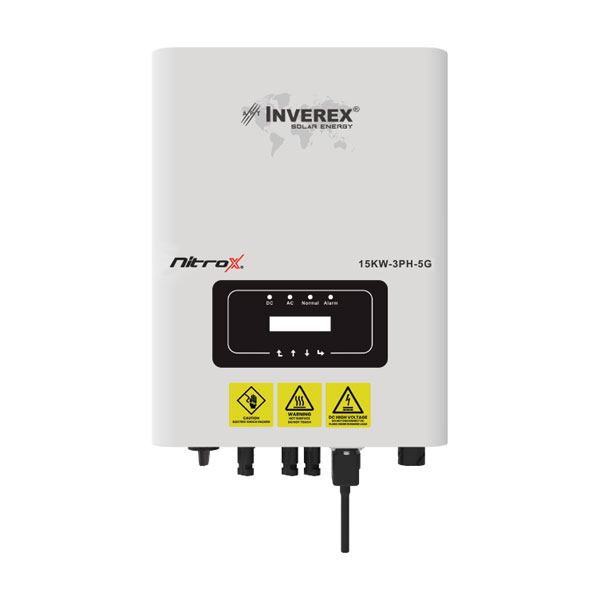The sun has always been our most abundant energy source, yet only recently have we begun to fully tap into its potential. As solar technology advances, one device stands at the core of a successful solar setup—the inverter. Particularly, on grid solar inverters have become the beating heart of efficient, money-saving, eco-friendly solar systems. But why are they so important, and how do you choose the best one?
What is an On Grid Solar Inverter?
An on grid solar inverter, often called a grid-tied inverter, connects your solar panel system directly to the public utility grid. It converts the direct current (DC) electricity generated by solar panels into alternating current (AC) electricity used by your home or business.
How On Grid Solar Inverters Work
The process is surprisingly simple yet ingenious. Solar panels collect sunlight and produce DC power. The on grid inverter immediately converts this to AC power. Any excess electricity is sent back to the grid, allowing you to earn credits through net metering while your property uses solar-generated energy first.
Difference Between On Grid and Off Grid Inverters
While on grid systems connect to a public utility, off grid systems operate independently with battery storage. If you crave energy independence, off grid might appeal to you. However, for most urban and suburban homeowners, grid-tied systems are more practical and economical.
Main Components of an On Grid Solar System
- Solar Panels: Capture sunlight.
- Inverter: Converts DC to AC power.
- Grid Connection: Distributes excess energy.
- Monitoring System: Tracks energy production and consumption.
Top Advantages of Using On Grid Solar Inverters
- Reduced Electricity Bills: Offset costs through net metering.
- Low Maintenance: Fewer components compared to off-grid setups.
- Efficiency: Maximize your solar panel output daily.
- Environmentally Friendly: Reduce carbon emissions.
Drawbacks of On Grid Solar Inverters
- No Backup Power: If the grid goes down, your system stops producing electricity unless paired with a battery backup.
- Dependency on Grid Availability: Performance hinges on the stability of your local power grid.
Grid-Tied Solar Systems: Are They Right for You?
If your area offers net metering programs, relatively stable weather, and reliable grid infrastructure, an on grid solar inverter system could be perfect for maximizing your investment.
The Role of Net Metering in On Grid Systems
Net metering lets you earn credits for every kilowatt-hour you send back to the grid. These credits can significantly offset your energy costs, resulting in much lower utility bills—sometimes even zero!
How to Select the Best On Grid Solar Inverter
When shopping, focus on:
- Efficiency Ratings
- Warranty Duration
- Compatibility with Your Panels
- After-Sales Service
- Smart Features (like monitoring apps)
Top Brands for On Grid Solar Inverters
Some top-rated manufacturers include:
- SMA Solar Technology
- Fronius
- SolarEdge
- Huawei
- Sungrow
Each offers reliability, warranty options, and varying price ranges.
Installation Process of On Grid Solar Inverters
Professional installation ensures safety and efficiency. Installers handle permits, mounting, wiring, and initial system testing to get you grid-connected smoothly.
Maintenance Tips for On Grid Solar Inverters
- Regularly monitor performance via your app.
- Keep the inverter unit clean and ventilated.
- Schedule annual inspections to catch minor issues early.
Common Issues with On Grid Inverters and Troubleshooting
- System Shutdown: May occur during a grid outage.
- Error Codes: Often related to grid fluctuations.
- Reduced Efficiency: Clean panels and check wiring connections.
Costs Involved in On Grid Solar Systems
System prices vary by size, brand, and location but generally range from $10,000 to $25,000 before incentives. Always factor in installation and permitting costs.
Government Incentives and Subsidies for Grid Tied Systems
You can tap into:
- Federal Tax Credits (like the 30% ITC)
- State-specific Rebates
- Local Utility Incentives
These can shave thousands off your initial investment!
Monitoring Your On Grid Solar Inverter
Most modern inverters come with smartphone apps allowing you to monitor:
- Daily production
- Real-time energy use
- System health alerts
Performance Expectations Over Time
Solar inverters typically last 10–15 years. However, with proper maintenance, your system can continue to operate efficiently for up to 25 years or more.
Why Warranty Matters for Solar Inverters
Look for a minimum 10-year warranty to ensure peace of mind. Some manufacturers offer extensions up to 20 years for an additional cost.
How On Grid Solar Helps Reduce Carbon Footprint
Every kilowatt-hour produced from solar instead of coal or gas dramatically cuts down your carbon emissions, contributing to a healthier planet.
On Grid Systems for Residential Use
Ideal for homeowners who want to slash electricity costs and increase their property value without worrying about complex off-grid maintenance.
On Grid Systems for Commercial Use
Businesses can drastically cut operational costs, improve their sustainability profiles, and even turn rooftop solar into a profitable investment.
Safety Features of Modern Solar Inverters
Today’s systems include arc fault protection, rapid shutdown capabilities, and anti-islanding protection for enhanced user and grid safety.
Myths and Facts About On Grid Solar Inverters
- Myth: They stop working on cloudy days.
Fact: They still produce energy, albeit at lower efficiency. - Myth: Solar systems are too expensive.
Fact: Costs have plummeted and incentives make them highly affordable.
Future Innovations in Grid-Tied Solar Technology
Expect smarter inverters capable of:
- Grid stabilization
- Self-healing technology
- Advanced cybersecurity protections
Challenges of Integrating Battery Storage with On Grid Systems
Batteries add complexity and cost but provide critical backup power. Hybrid systems are becoming more popular for this very reason.
Understanding Smart Inverters and Their Benefits
Smart inverters offer real-time communication with the grid, allowing for more stable electricity distribution and rapid response to grid issues.


